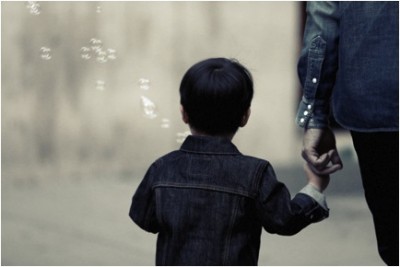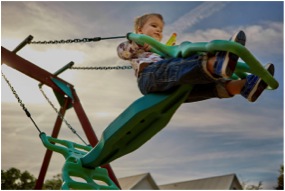 By Marie-Claire Flores Pajot, Dept. of Health Sciences, Carleton University
By Marie-Claire Flores Pajot, Dept. of Health Sciences, Carleton University
No child should be left out from going to school for the very first time, playing at recess with new friends, or having the opportunity to learn about what the world will offer them in life. And no family should lose these or other precious moments with their children. Unfortunately, this is the case for some. Planning visits to the oncologist as opposed to birthday parties; cheering as they see their brave children succeed a battle through chemotherapy as opposed to cheering for scoring a goal in a soccer game.
Estimates from the Canadian Cancer Society in 2014 indicate that in the next few years approximately 1450 new cases of cancer will occur annually in Canadian children under the age of 19. Thankfully, many childhood cancers can now be treated and even cured. However, treatment does not remediate the significant psychosocial and financial burden to patients and families; not to mention the dreadful journey through chemotherapy: pain, emotional distress and sleepless nights for both the young patient, and their families.
 It is often forgotten that overcoming treatment is not crossing the finish line; unfortunately, quite often the battle continues. Late-effects are common and can accompany survivors for months or even decades after their cancer treatment has ended. Some of the late-effects can be emotional complications, such as anxiety and depression; other late-effects are reproductive or sexual development problems, that can affect both boys and girls well into adulthood; learning and memory difficulties are also common; and there are many physical complications such as heart problems caused by the use of anthracycline drugs during treatment, hearing problems due to radiation therapy, as well as muscle and nerve damage that can result in pain or weakness (National Cancer Institute, 2015).
It is often forgotten that overcoming treatment is not crossing the finish line; unfortunately, quite often the battle continues. Late-effects are common and can accompany survivors for months or even decades after their cancer treatment has ended. Some of the late-effects can be emotional complications, such as anxiety and depression; other late-effects are reproductive or sexual development problems, that can affect both boys and girls well into adulthood; learning and memory difficulties are also common; and there are many physical complications such as heart problems caused by the use of anthracycline drugs during treatment, hearing problems due to radiation therapy, as well as muscle and nerve damage that can result in pain or weakness (National Cancer Institute, 2015).
New advances are aiming for early diagnosis to improve patient outcomes (Weller et al., 2012). The causes of the different cancers are complex and elusive but continue to be investigated in clinical settings, laboratories and epidemiological studies (Danaei et al., 2005). Nonetheless, there is likely a combination of genetics, lifestyle, environment and random error in cell replication and control, which influence an individual’s cancer risk (Buka, Koranteng, & Vargas, 2007; Stiller, 2004). In order to implement cancer prevention initiatives, it is important to better understand how many of the new cancer cases in a population are due to modifiable risk factors that could be prevented.
 The role of the environment
The role of the environment
The importance of our environment has been recognized to play an important role in our physical and mental health (Evans, 2003; McMorris, Villeneuve, Su, & Jerrett, 2015). Yet, we often forget that even the filtered water used for the morning coffee or tea, the background noise, the air conditioning at the office, all impacts our overall wellbeing to some degree. The significant implication of our environment shaping our health has motivated researchers to investigate possible causes to cancer at different spatial scales, from the particles that linger in our bedroom (Zhang & Smith, 2003), to the neighbourhood we live in (Eschbach, Mahnken, & Goodwin, 2005).
Environmentally derived chemicals entering the human body via food, drink or air that have been shown to, or suspected to, increase risk of developing cancer are called ‘environmental carcinogens’ (Hemminki, 1990). To date, some of the well-studied environmental carcinogens include electromagnetic fields, pesticides, and air pollution (Cancer; Zahm & Devesa, 1995). Canadian studies that have looked at recognized carcinogens emitted to the environment, found that the amounts varied considerably by province. Interestingly, the rate of new adult cancer cases is also observed to vary by province, with a declining rates moving across Canada from east to west, with the highest incidence rates in Quebec and the Atlantic provinces and the lowest rates in Alberta and BC (Canadian Cancer Society’s Advisory Committee on Cancer Statistics, 2015). These differences in incidence rates of cancer by geographic location can be driven by multiple factors, most notably differences in the age demographic of those who live in different locations. However, neither demographic differences nor lifestyle-related factors, like smoking, can fully explain these geographic variations. Exposure to environmental carcinogens has been recognized to have a significant impact on new cancer rates, and due to the observed patterns of variability of exposure across the nation, studying the extent to which these patterns co-occur with childhood cancer rates may give insight into the etiology of some cancers.
 These questions have motivated researchers Drs. Alvaro Osornio-Vargas, Osmar Zaiane, David Eisenstat from the University of Alberta, and Paul Villeneuve from Carleton University, to take a further step and investigate the associations between exposure to environmental carcinogens and the incidence of childhood cancer in Canada. This study is being funded by the Cancer Research Society and Read for the Cure. Using a special technique called data mining, they will study the national patterns and trends of childhood cancer and assess the relationship with multiple chemicals. Nineteen known carcinogens and 51 potential carcinogens emitted into the air by industries between 2001 and 2011 will be studied to better understand their association with cancer in children under the age of 19 years. The International Agency for Research on Cancer (IARC) classifies outdoor air pollution as a carcinogen (Simon, 2013). In urban areas, traffic is often the main source of ambient air pollution and there are increasing reports of the risks associated with proximity to high-density traffic, including risk of childhood leukemia (Raaschou-Nielsen, Hertel, Thomsen, & Olsen, 2001). Therefore, in addition to industrial emissions, this project will also examine impacts of meteorological conditions that play a role in dispersing emissions, as well as the impact of proximity to major roads.
These questions have motivated researchers Drs. Alvaro Osornio-Vargas, Osmar Zaiane, David Eisenstat from the University of Alberta, and Paul Villeneuve from Carleton University, to take a further step and investigate the associations between exposure to environmental carcinogens and the incidence of childhood cancer in Canada. This study is being funded by the Cancer Research Society and Read for the Cure. Using a special technique called data mining, they will study the national patterns and trends of childhood cancer and assess the relationship with multiple chemicals. Nineteen known carcinogens and 51 potential carcinogens emitted into the air by industries between 2001 and 2011 will be studied to better understand their association with cancer in children under the age of 19 years. The International Agency for Research on Cancer (IARC) classifies outdoor air pollution as a carcinogen (Simon, 2013). In urban areas, traffic is often the main source of ambient air pollution and there are increasing reports of the risks associated with proximity to high-density traffic, including risk of childhood leukemia (Raaschou-Nielsen, Hertel, Thomsen, & Olsen, 2001). Therefore, in addition to industrial emissions, this project will also examine impacts of meteorological conditions that play a role in dispersing emissions, as well as the impact of proximity to major roads.
 Overall, this study hopes to improve our understanding of the extent to which the geographic variability of childhood cancer rates in Canada is associated with industrial and traffic-related pollution. The knowledge gained might support future prevention strategies for specific types of cancer. More epidemiological studies, such as this one, in conjunction with clinical studies, will identify areas where action can be taken to prevent childhood cancer, and perhaps one day children will not have to choose between which toy to bring to chemo, but instead which park to play in next.
Overall, this study hopes to improve our understanding of the extent to which the geographic variability of childhood cancer rates in Canada is associated with industrial and traffic-related pollution. The knowledge gained might support future prevention strategies for specific types of cancer. More epidemiological studies, such as this one, in conjunction with clinical studies, will identify areas where action can be taken to prevent childhood cancer, and perhaps one day children will not have to choose between which toy to bring to chemo, but instead which park to play in next.
References
Buka, I., Koranteng, S., & Vargas, A. R. O. (2007). Trends in childhood cancer incidence: review of environmental linkages. Pediatric Clinics of North America, 54(1), 177-203.
Canadian Cancer Society’s Advisory Committee on Cancer Statistics. (2015). Canadian Cancer Statistics 2015. Canadian Cancer Society.
Cancer, I. A. f. R. o. Overall Evaluations of Carcinogenicity to Humans. List of all agents, mixtures and exposures evaluated to date.
Danaei, G., Vander Hoorn, S., Lopez, A. D., Murray, C. J., Ezzati, M., & group, C. R. A. c. (2005). Causes of cancer in the world: comparative risk assessment of nine behavioural and environmental risk factors. The Lancet, 366(9499), 1784-1793.
Eschbach, K., Mahnken, J. D., & Goodwin, J. S. (2005). Neighborhood composition and incidence of cancer among Hispanics in the United States. Cancer, 103(5), 1036-1044.
Evans, G. W. (2003). The built environment and mental health. Journal of Urban Health, 80(4), 536-555.
Hemminki, K. (1990). Environmental carcinogens Chemical Carcinogenesis and Mutagenesis I (pp. 33-61): Springer.
McMorris, O., Villeneuve, P. J., Su, J., & Jerrett, M. (2015). Urban greenness and physical activity in a national survey of Canadians. Environmental research, 137, 94-100.
National Cancer Institute. (2015). Late Effects of Treatment for Childhood Cancer. Childhood Cancers.
Raaschou-Nielsen, O., Hertel, O., Thomsen, B. L., & Olsen, J. H. (2001). Air pollution from traffic at the residence of children with cancer. American journal of epidemiology, 153(5), 433-443.
Simon, S. (2013). World Health Organization: Outdoor Air Pollution Causes Cancer. American Cancer Society.
Stiller, C. A. (2004). Epidemiology and genetics of childhood cancer. Oncogene, 23(38), 6429-6444.
Weller, D., Vedsted, P., Rubin, G., Walter, F., Emery, J., Scott, S., . . . Olesen, F. (2012). The Aarhus statement: improving design and reporting of studies on early cancer diagnosis. British Journal of Cancer, 106(7), 1262-1267.
Zahm, S. H., & Devesa, S. S. (1995). Childhood cancer: overview of incidence trends and environmental carcinogens. Environmental health perspectives, 103(Suppl 6), 177.
Zhang, J. J., & Smith, K. R. (2003). Indoor air pollution: a global health concern. British medical bulletin, 68(1), 209-225.